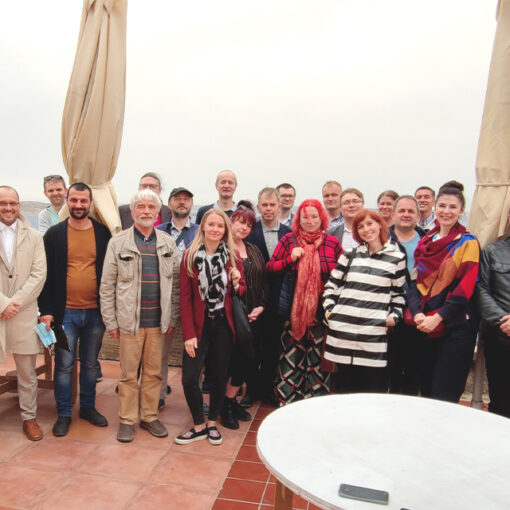Social sustainability was recently defined by the World Bank as when all people feel part of a development process and believe that they and their descendants will benefit from it (Barron et al. 2023, 19–20). So why is it that some researchers feel like the sentiment of communities affected by large-scale projects is undervalued in impact assessment frameworks? (Vanclay 2019, 126–131; Biswal et al. 2023, 416–427)
If during the planning phase, a project has estimated pollution levels that rise above what is established as healthy, it will most likely not be approved. If high pollution levels are discovered only during the operation phase, there is still a high risk that it will be suspended or shut down entirely. However, such drastic measures are not the standard when it comes to potential negative levels of social impact in surrounding communities.
The perspective of a community is understandably difficult to measure since satisfaction levels are complex and dependent on the interests and values of each individual (Richter 2023, 591). Results can also be very different in distinct areas of social wellbeing and at different points in time. Even if this is the case, there are existing frameworks which can help project developers as well as government bodies build a picture of a community’s standpoint. By measuring social impact, opportunities can be discovered, challenges can be forecasted and handled, and risks can be mitigated appropriately.
Social Licence to Operate
Social Licence to Operate or SLO is one of the concepts which can be used as a framework of continuous evaluation of social impact perception and community acceptance of an organization or project (Stuart et al. 2023). The importance of SLO analysis is highlighted by its iterative nature which allows for the evaluation of community acceptance at different stages of the project. This contrasts with Social Impact Assessment methods, which are usually carried out in the context of a larger Environmental Impact Assessment (EIA) effort, and is part of the planning and construction phases of a relevant undertaking (Ogorodnikova et al. 2024, 16–31).
Some of the parameters which can be used to measure SLO are closely related to the definition of social sustainability. The following SLO factors have been defined by Cruz et al. (2021):
- Procedural fairness
- Company relationship with community
- Improvements in infrastructure (access to health, education, basic infrastructure)
- Company trust
- Economic impacts
- Environmental impacts
Continuous analysis such as those done through an SLO framework could serve as useful tools for the overall environmental impact monitoring of, for example, industrial projects. The reiterative feedback and valuable input could allow organizations (public and private) to refine their community initiatives and establish effective synergies in development of policies and fund allocation (Image 1).

Image 1. Gathering feedback from the community can support the development of ideas towards more effective strategies. (Subiyanto 2020)
Real-life applications
In general, SLO is used as a tool for Corporate Social Responsibility (CSR) strategies planning. Because CSR activities are not a mandatory practice for companies in general, input from the community is not consistently present in the post-launch phase of industrial or large-scale projects. The most visible examples of community acceptance, or lack thereof, that have led to tangible consequences have been related to Indigenous community land use (Alarcón 2024; Bernauer & Cameron 2026).
For example, the request to initiate a mining project in the Maricunga Salar in Chile was objected by the Indigenous communities and other local stakeholders and this compelled the company to negotiate the terms of the proposal. This case was a result of Chile ratifying Indigenous rights at a national institutional level, with the goal of protecting their interests in the context of development projects and land use. (Vivoda et al. 2025.) This is one case that can be used to emphasize the importance of dialogue to avoid social disruption risks and engage with the communities conscientiously, not only in the planning phases but also during operations and modifications of a project.
Social sustainability and community transformation related to the Paso de los Toros pulp mill installation in Uruguay was studied by Alexandra Kelemen (2025) in her recent Bachelor’s thesis. The thesis showed that the importance of developing social sustainability standards and practices as a part of the overall sustainability is evident. There is a need for continued stakeholder dialogue, and SLO can be a helpful tool to support this effort.
Authors
Alexandra Kelemen has graduated with a Bachelor’s degree in Sustainable Solutions Engineering from LAB University of Applied Sciences. She is originally from Uruguay.
Susanna Vanhamäki is a principal lecturer in circular economy at LAB University of Applied Sciences and has researched social sustainability in various contexts.
References
Alarcón, P. 2024. What next for supply-side policy in the south: emerging lessons from Ecuador’s Yasuní initiative. International Environmental Agreements: Politics, Law and Economics. Vol. 24 (1), 75–90. Cited 10 November 2025. Available at https://doi.org/10.1007/s10784-024-09624-2
Bernauer, W. & Cameron, E. 2026. What does it take to stop a mine? Indigenous interventions and project rejection in Nunavut, Canada. Environmental Impact Assessment Review. Vol. 116, 108071. Cited 10 November 2025. Available at https://doi.org/10.1016/j.eiar.2025.108071
Biswal, R., Sinclair, A. J. & Spaling, H. 2023. Moving to next generation community-based environmental assessment. Impact Assessment and Project Appraisal, Vol. 41 (5), 416–427. Cited 8 November 2025. Available at https://doi.org/10.1080/14615517.2023.2243019
Cruz, T. L., Matlaba, V. J., Mota, J. A. & dos Santos, J. F. 2021. Measuring the social license to operate of the mining industry in an Amazonian town: A case study of Canaã dos Carajás, Brazil. Resources Policy. Vol. 74, 101892. Cited 10 November 2025. Available at https://doi.org/10.1016/j.resourpol.2020.101892
Kelemen, A. 2025. Life After Industry: Social Sustainability and Community Transformation in Paso de los Toros, Uruguay. LAB University of Applied Sciences, Faculty of Technology. Lahti. Cited 10 November 2025. Available at https://urn.fi/URN:NBN:fi:amk-2025111728212
Ogorodnikova, V., Tricoli, F., Esteves, A. M. & Ishihara, S. 2024. Chapter 2: National legal frameworks for social impact assessment and management. In Vanclay, F. & Esteves, A.M. (eds.). Handbook of Social Impact Assessment and Management. Cheltenham: Edward Elgar Publishing. 16–31. Cited 10 November 2025. Available at https://doi.org/10.4337/9781802208870
Richter, F., Gawenko, W., Götze, U. & Hinz, M. 2023. Toward a methodology for social sustainability assessment: A review of existing frameworks and a proposal for a catalog of criteria. Schmalenbach Journal of Business Research. Vol. 75, 587–626. Cited 8 November 2025. Available at https://doi.org/10.1007/s41471-023-00174-y
Stuart, A., Bond, A., Franco, A. M. A., Baker, J., Gerrard, C., Danino, V. & Jones, K. 2023. Conceptualising social licence to operate. Resources Policy. Vol. 85 (A), 103962. Cited 10 November 2025. Available at https://doi.org/10.1016/j.resourpol.2023.103962.
Subiyanto, K. 2020. People having a meeting. Pexels. Cited 13 November. Available at https://www.pexels.com/photo/people-having-a-meeting-4623461/
Vanclay, F. 2019. Reflections on Social Impact Assessment in the 21st century. Impact Assessment and Project Appraisal. Vol. 38 (2), 126–131. Cited 8 November 2025. Available at https://doi.org/10.1080/14615517.2019.1685807
Vivoda, V., Ralph, N., Khadim, A., Wight, N. & Bazilian, M. D. 2025. Chile’s lithium exceptionalism: Strategic legacies and the contested future of the Salar de Maricunga. Energy Research & Social Science. Vol. 130, 104428. Cited 10 November 2025. Available at https://doi.org/10.1016/j.erss.2025.104428




